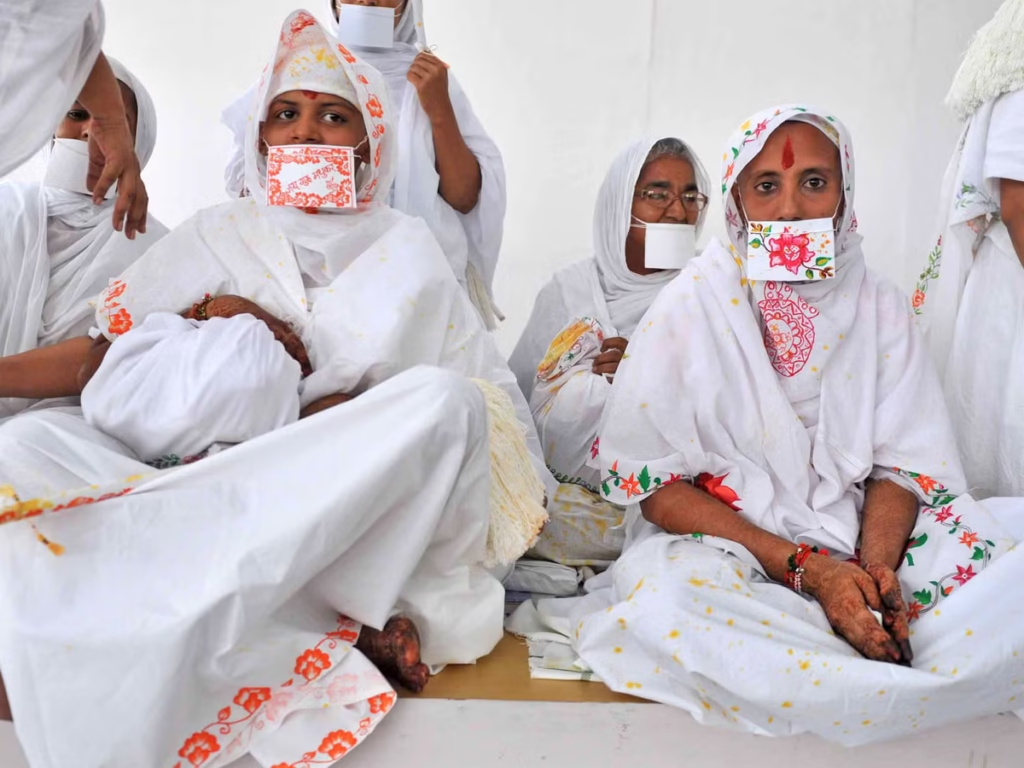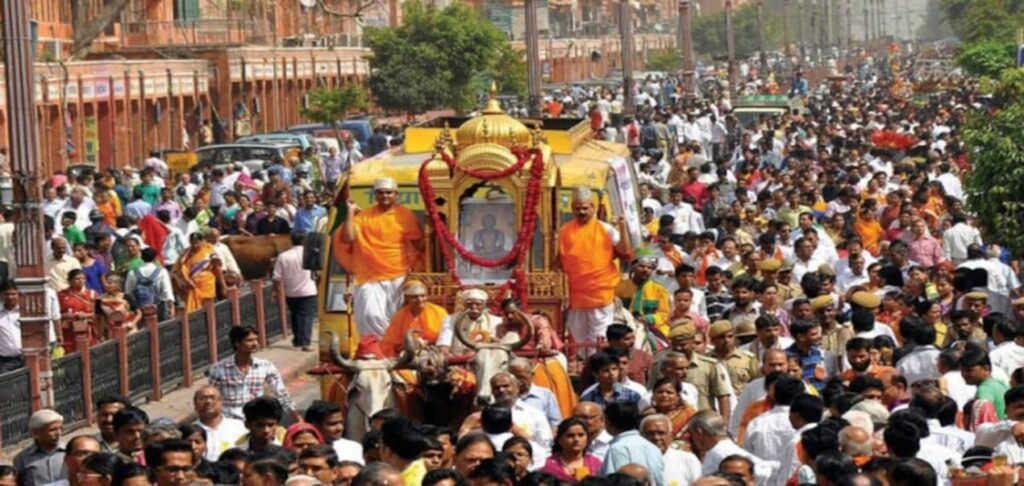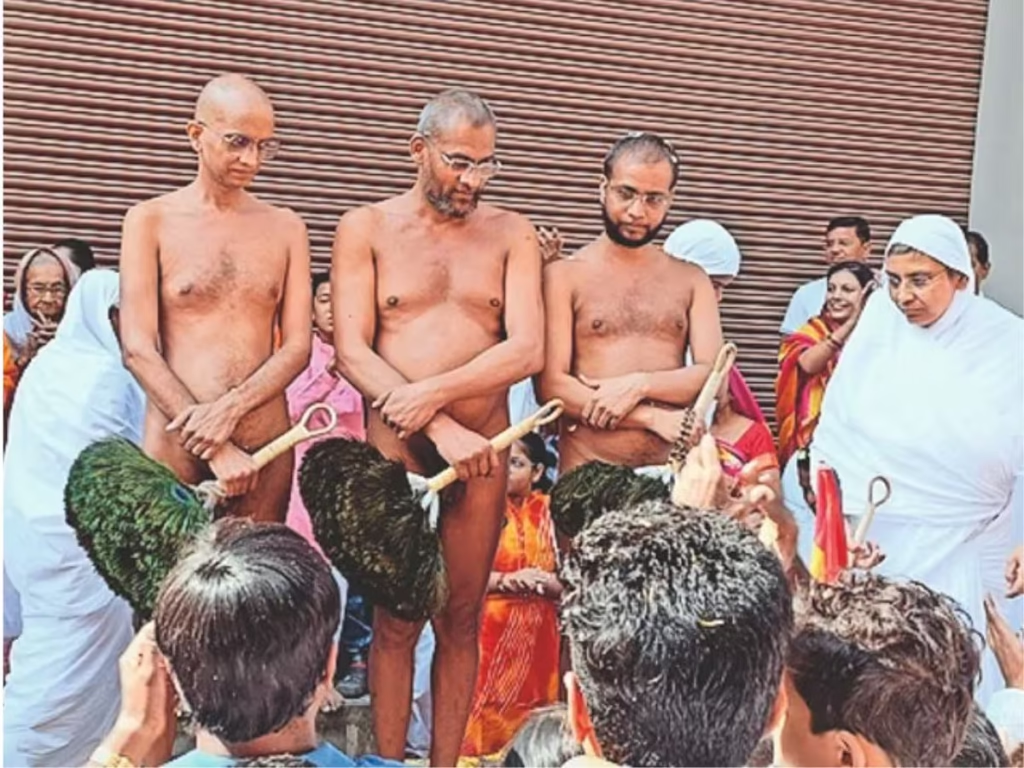Explore the unique world of Jain religious beliefs, practices, and facts in this beginner-friendly guide. Discover key rituals, core values like non-violence, and daily habits that shape Jain spirituality.
Understanding Jain religious beliefs was a personal eye-opener for me. The religion is deeply peaceful and disciplined. Unlike many faiths, Jainism focuses on strict non-violence and deep self-control. I’ve always admired how followers live such a pure and simple life. If you’re curious like I was, this guide will walk you through the essential practices and amazing facts about Jainism in the simplest way.
H2: What Are Jain Religious Beliefs?

One of the core Jain religious beliefs is Ahimsa, or non-violence. This belief isn’t just about avoiding physical harm—it also includes thoughts and words. Jains believe every soul is equal, and hurting any being adds karmic weight. Another central belief is Anekantavada, meaning truth has many sides. I loved learning that Jains encourage open-mindedness and respect for different perspectives.
H3: Key Jain Philosophies
| Belief System | Meaning | Why It Matters |
|---|---|---|
| Ahimsa | Non-violence to all living beings | Keeps actions pure and peaceful |
| Anekantavada | Many-sided truth | Promotes tolerance and respect |
| Aparigraha | Non-attachment to possessions | Encourages spiritual detachment |
These three pillars—Ahimsa, Anekantavada, and Aparigraha—shape every part of Jain life. I try to remember these values when making everyday choices.
H2: Common Jain Religious Practices
What really amazed me was how deeply Jain religious practices are woven into daily routines. Jains usually avoid root vegetables to prevent harming tiny organisms. They follow a strict vegetarian diet, and many even avoid eating after sunset. Practicing truthfulness, chastity, and non-possessiveness is part of their spiritual journey. These acts are not just habits—they’re reflections of their commitment to higher living.
H3: Daily Habits Practiced by Jains
Here are some typical Jain daily practices I found inspiring:
- Waking up before sunrise for prayer and meditation
- Practicing Samayik (period of reflection and calm)
- Avoiding violence in thought, word, and deed
- Eating before sunset to aid digestion and purity
- Wearing simple clothing, often white
Jains believe these daily rituals help cleanse their karma and elevate their soul.
H2: Jain Monks and Nuns: Role Models of Discipline

When I first read about Jain monks and nuns, I was truly inspired. They live without any possessions, walk barefoot, and even sweep the ground as they walk to avoid stepping on insects. Their lives are centered around spiritual purity. They don’t stay in one place for long, showing non-attachment in its purest form. These ascetics are considered the heart of Jain religious discipline.
H3: Five Major Vows Taken by Jain Monks
| Vow | Description |
|---|---|
| Ahimsa | Absolute non-violence |
| Satya | Always speak the truth |
| Asteya | Do not steal or take what’s not given |
| Brahmacharya | Celibacy and control of desires |
| Aparigraha | Renounce material possessions |
These vows are intense. But for Jains, they’re the key to true spiritual liberation.
H2: Interesting Facts About Jainism
The more I learned, the more fascinated I became with Jain facts. Did you know Jainism is one of the oldest religions, dating back to at least the 6th century BCE? Here are some surprising things I discovered:
“Jainism teaches that liberation comes from self-effort. No divine creator can grant moksha.”
I found that empowering. Here are a few more Jainism facts worth knowing:
H3: Surprising Jainism Facts
- Jains believe in infinite souls, each capable of reaching liberation.
- The Tirthankaras are 24 spiritual teachers who guide souls.
- Mahavira is the 24th and most recent Tirthankara.
- Many Jain temples are carved from marble and show fine detail.
- Jains contribute greatly to education, business, and charity.
Every fact deepened my appreciation for this thoughtful religion.
H2: Major Jain Festivals and Their Meaning

Jain festivals are deeply spiritual rather than celebratory. One that stood out to me was Paryushana, an 8–10 day period of fasting, prayer, and forgiveness. During this time, Jains seek forgiveness from others and reflect on their actions. It’s a powerful way to renew spiritual focus. The festival ends with Samvatsari, the Day of Forgiveness.
H3: List of Jain Festivals
- Mahavir Jayanti – Celebrates the birth of Mahavira
- Paryushana – Period of intense reflection
- Samvatsari – Day of Forgiveness
- Diwali—Marks Lord Mahavira’s Nirvana
- Kartik Purnima – Celebrates pilgrimage and charity
These festivals aren’t about gifts—they’re about purity, compassion, and soul-cleansing.
H2: Jain Symbols and Their Meanings
Symbols in the Jain religion carry deep meanings. The most important one is the hand with a wheel, symbolizing Ahimsa. It means “stop and consider before harming anyone.” The Swastika symbolizes the four states of existence: heavenly, human, animal, and hellish. These symbols constantly remind Jains of their spiritual responsibilities.
H3: Common Jain Symbols
| Symbol | Meaning |
|---|---|
| Ahimsa Hand | Stop violence, respect all life |
| Swastika | Rebirth cycle in 4 life forms |
| Three Dots | Right faith, right knowledge, right conduct |
Learning about these symbols helped me visualize Jain teachings more clearly.
H2: Jainism and Science: A Thoughtful Connection
It surprised me how much Jain beliefs align with science. The concept of tiny life forms in air, water, and earth shows an understanding of microorganisms long before microscopes. The stress on mindfulness, minimalism, and plant-based diets also reflects modern wellness trends. It felt like Jainism was centuries ahead in many ways.
H3: Jainism in the Modern World

Here’s how Jainism connects to today’s world:
- Promotes environmental care through non-violence
- Encourages minimalism and eco-living
- Builds mental peace through meditation and detachment
- Supports plant-based and cruelty-free living
I saw how Jain values can truly enrich modern life—mentally and morally.
H2: Jainism vs. Other Indian Religions
At first, I confused Jainism with Hinduism and Buddhism. But soon I understood their differences. Jains reject creator gods, focus solely on self-effort, and have stricter rules around non-violence. While all three believe in karma and rebirth, Jains take it to the most disciplined level.
H3: Quick Comparison Table
| Feature | Jainism | Hinduism | Buddhism |
|---|---|---|---|
| Creator God | None | Many deities | No creator |
| Path to Liberation | Self-discipline | Bhakti, karma, etc. | Eightfold path |
| Non-violence | Absolute | Moderate | Moderate |
This comparison made me realize how unique Jain beliefs really are.
Conclusion
Learning about Jain religious beliefs, practices, and facts changed my perspective on life. The emphasis on non-violence, truth, and simplicity helped me reflect on my own values. Jainism isn’t just a religion—it’s a lifestyle rooted in peace and awareness. If you’re on a spiritual journey, exploring Jainism might offer the clarity and calm you’re looking for. It sure gave me a new way to see the world.


